
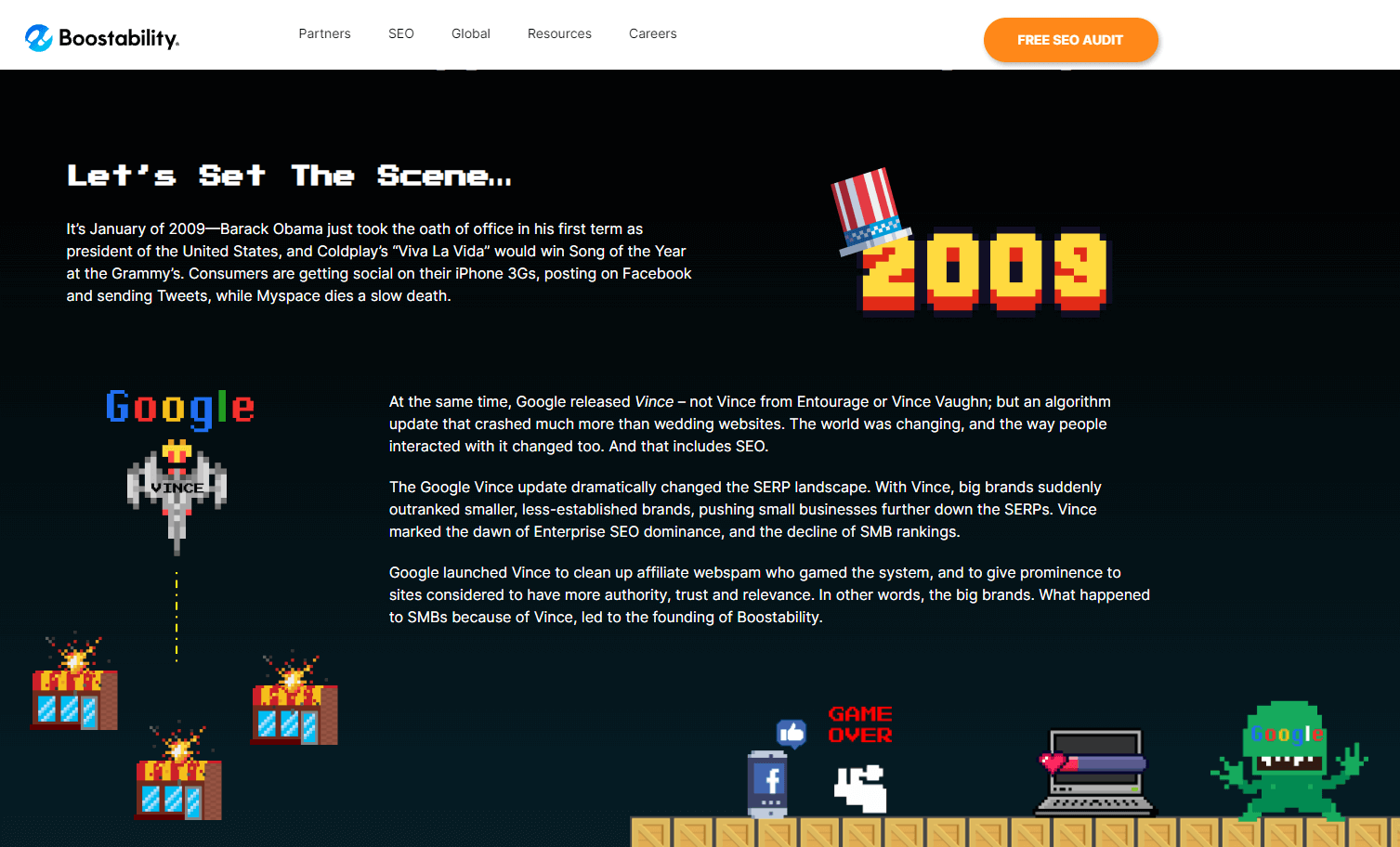



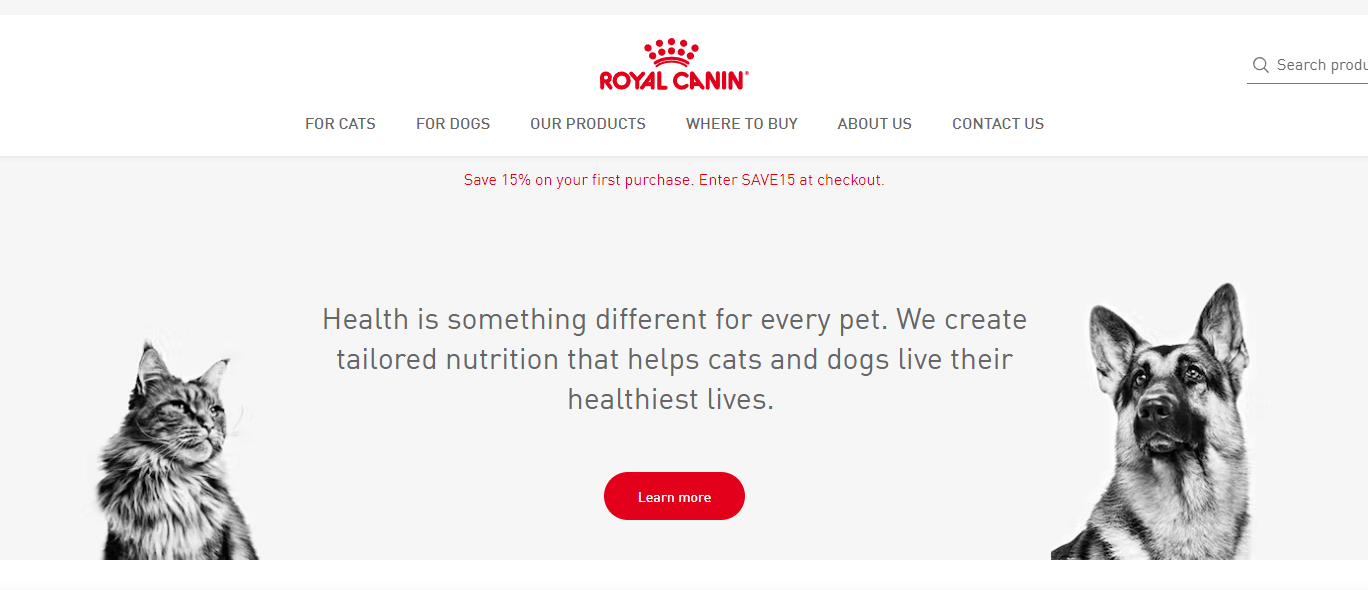
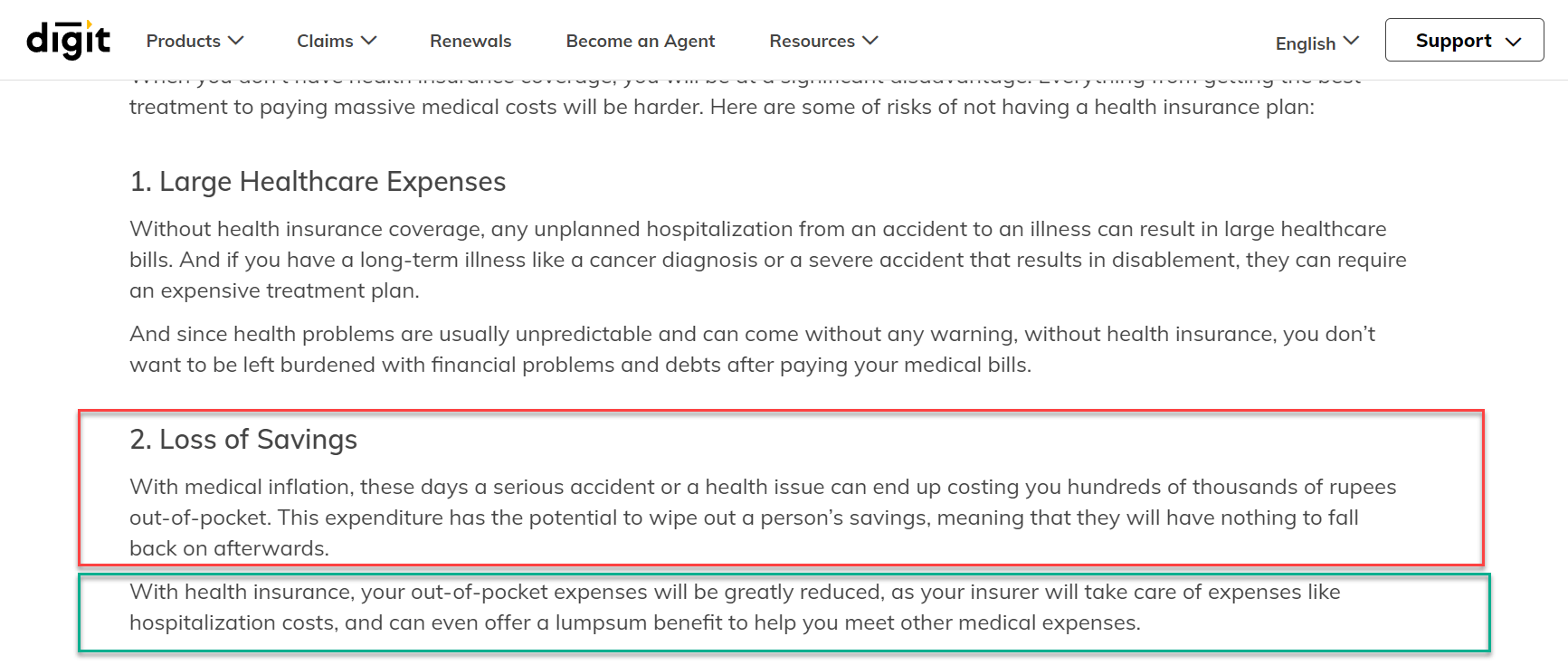


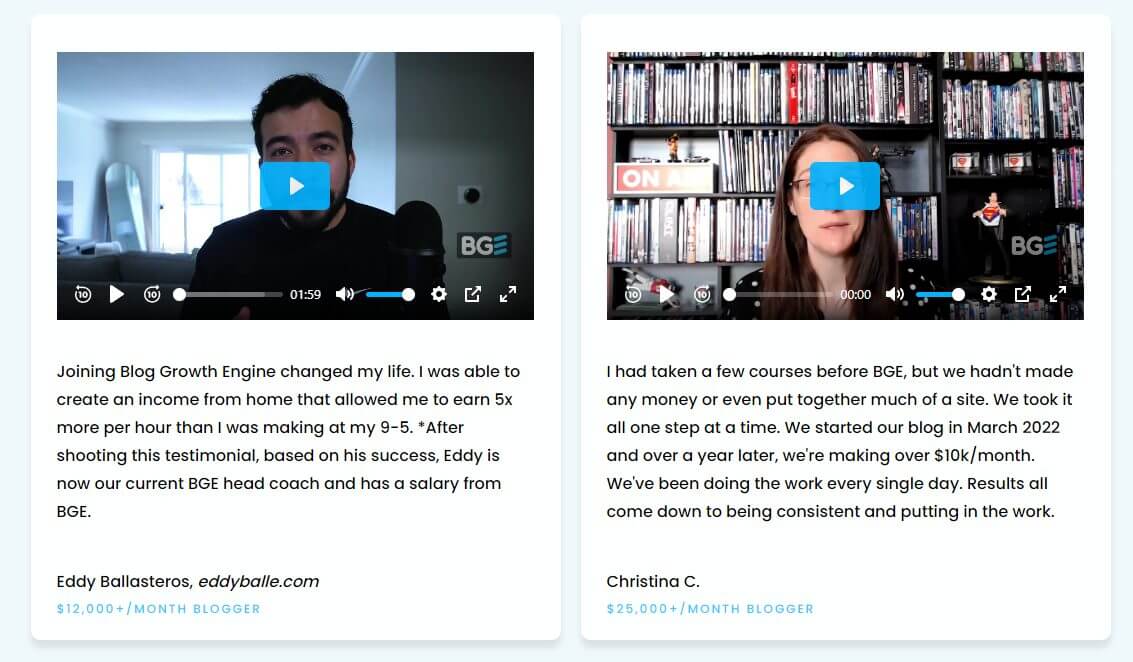
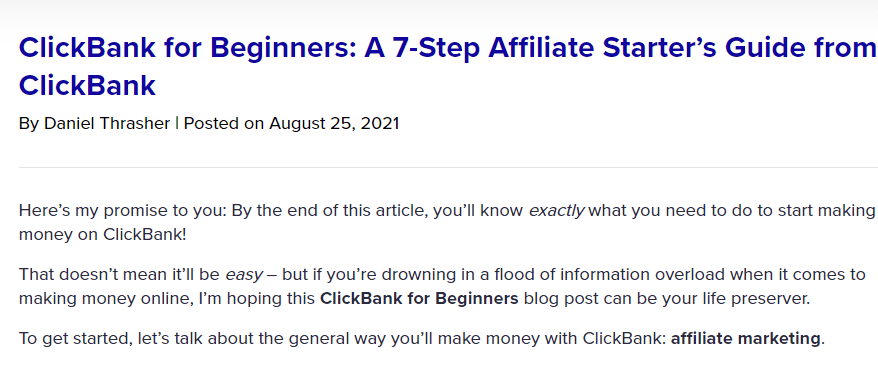

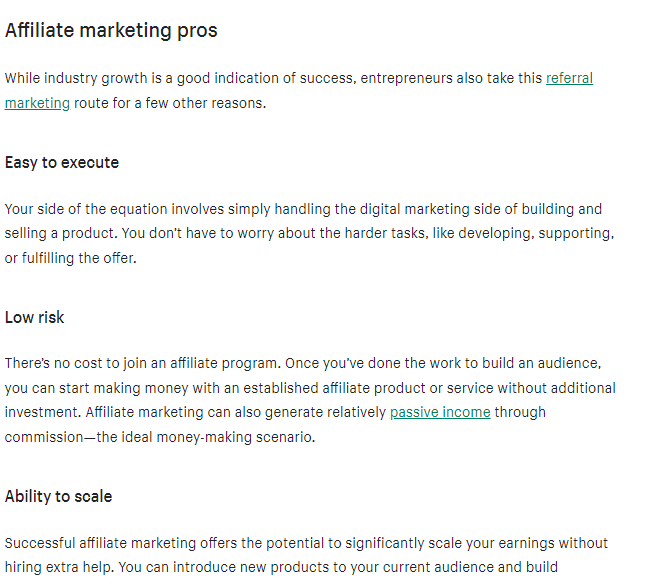

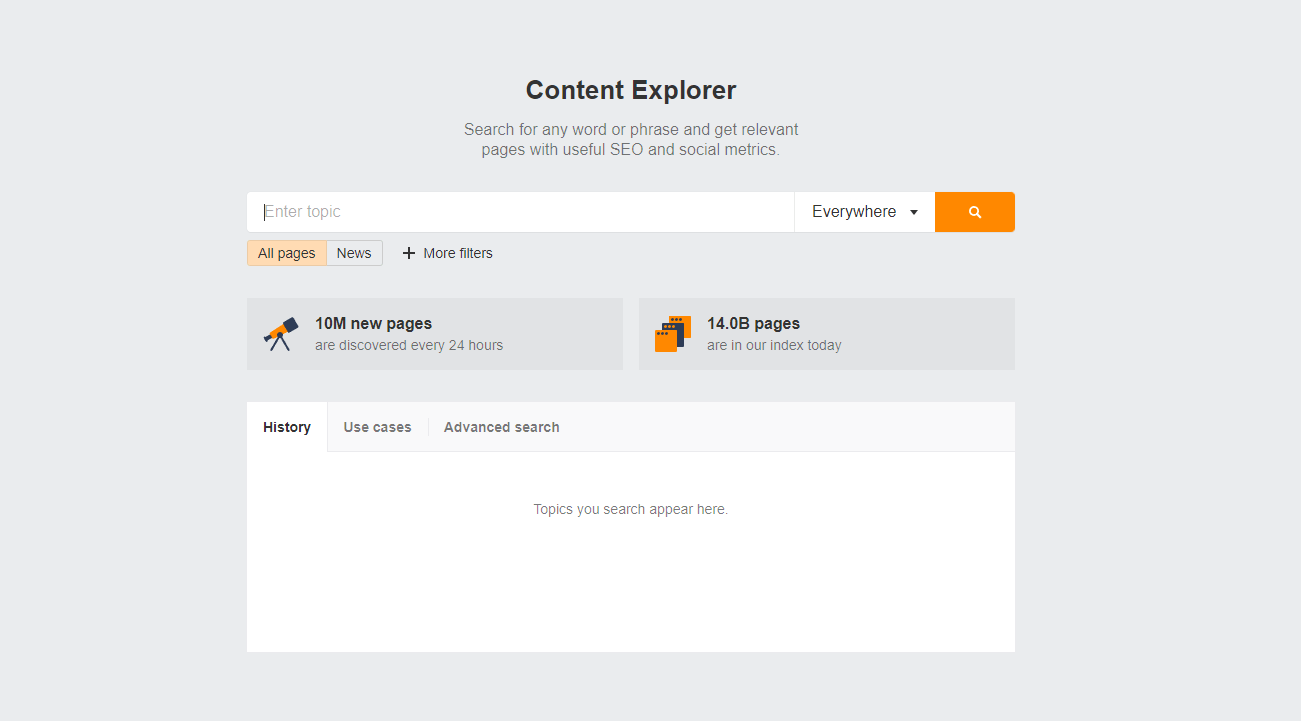


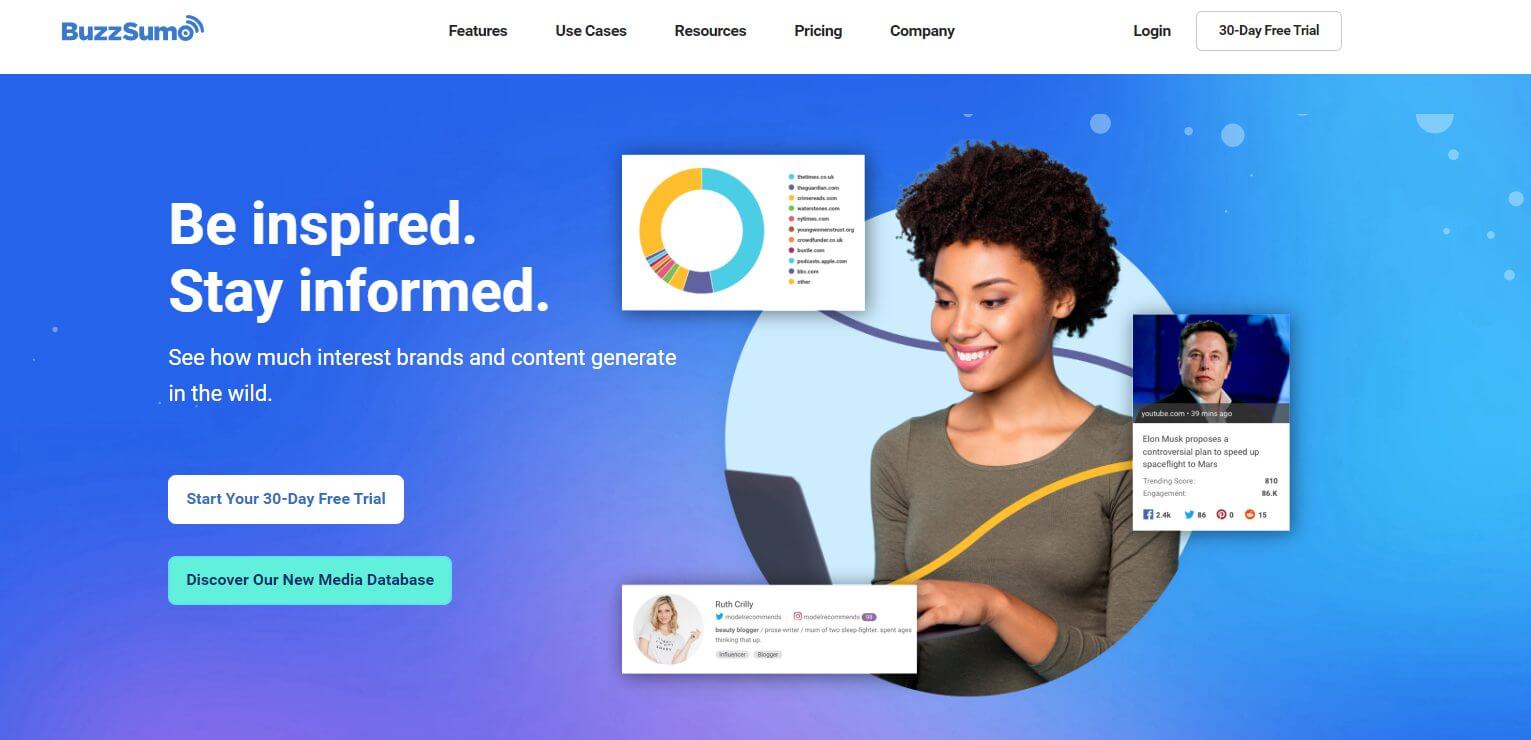
In an age where AI content generators churn out articles at the speed of light, the internet is flooded with words, articles, and websites.
But how many of those words truly resonate?
How many SEO bloggers get you to click, read, and share while making your heart race as you consume the content?
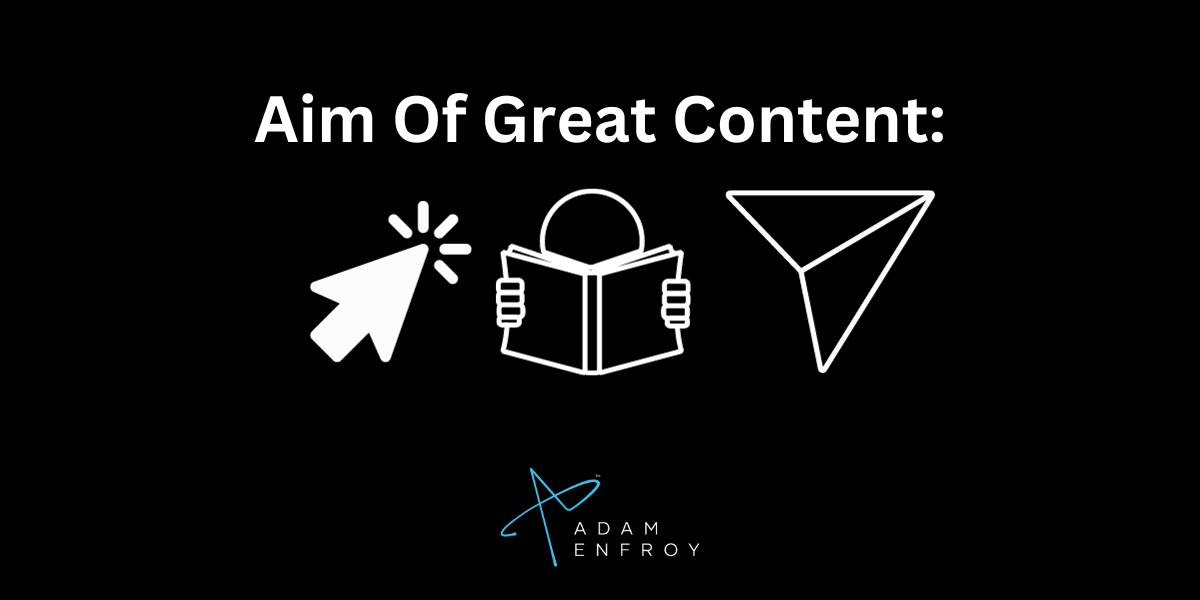
The challenge isn’t just about creating content – that’s the easy part.
It’s crafting content that speaks to the soul, tugs at the heartstrings, and ignites a fire within the reader.
So, how can you bridge that gap between mere words and profound impact?
There are two steps to my approach:
- I dive deep into the reader’s desires, fears, and aspirations.
- I use these insights to write in a way that doesn’t just inform but captivates and inspires.
Combining proven SEO practices with the right content-writing techniques is my secret sauce.
If you want to transform your content from mundane to magnetic (so you can better reach your audience and drive more conversions), keep reading.
SEO Content Writing: The Past vs. The Present
In the past, SEO writing was less about the reader and more about the search engine algorithms.
Writers often stuffed articles with keywords.
They did this even if these keywords didn’t make sense in the content. Early in my career, I once read an article that went:
If you want to find the best chiropractor in Detroit, look no further than this guide on how to find the best chiropractor in Detroit, where we recommend how you can find the best chiropractor in Detroit from our list of the 10 best chiropractors in Detroit.
*sigh*
The structure was rigid and focused heavily on ranking – not on providing value to the reader.
This approach often led to content that was difficult to read and lacked genuine substance.
Some say the advent of AI made content writing worse.
Since writers were no longer the only ones producing content (i.e., machines joined the ranks), everyone was on the same playing field.
Many writers found themselves out of a job – unless they adapted.
Content began moving away from simple keyword stuffing to creating SEO-optimized and reader-friendly content.
The Helpful Content update really went deep into this.
This update ensures that if a page doesn’t help readers get the information they want, it doesn’t appear high in the search results.
This makes it easier for people to find what they need – quickly.
As a search engine optimization writer, the focus is now on creating really helpful pages.
If you do, Google will show your page to more people.
In other words, writing a blog post that attracts readers is no longer (just) about keyword optimization.
It’s all about creating content that answers the reader’s questions and provides valuable information.
SEO Content Writing Examples
In this section, I’m going to walk you through 11 real-world SEO content writing examples:
- Using Storytelling
- Keywords In Titles And Meta Descriptions
- Use Active Voice Over Passive Voice
- Use The Right Call-to-Actions
- Use Emotional-Based Words
- Apply Extended Expertise, Authority, and Trustworthiness
- Use Bullet Lists
- Develop Unique Content Around Case Studies
- Tailor Your Content To Your Readers
- Use A Skimmable Format
- Use Data and Citations
Whether starting a blog and wanting to get it right immediately or simply wishing to tweak your current processes, these sections WILL help you.
You can also click on the above sections to jump directly to the examples you want.
1. Using Storytelling (Gets People Hooked)
Storytelling is about adding a fun twist to what you write.
It grabs people’s attention and makes stuff stick in their minds.
This is great because as people spend more time reading, they also spend more time on your site.
In fact, “Dwell Time” is an important SEO metric.
Why so?
Here are some of the key reasons:
- User Engagement Indicator: A longer dwell time can indicate that the user found the content valuable, engaging, or relevant to their query. If users consistently spend more time on a page, search engines might infer that the page provides valuable content for that particular search query.
- Quality Content Confirmation: Search engines aim to provide the best answers to users’ queries. If users spend a significant amount of time on a page, it can be a signal that the content is of high quality and satisfies the user’s intent.
- Reduced Bounce Rate: Dwell time is closely related to bounce rate. A high bounce rate (where users quickly return to the SERPs after clicking on a result) can indicate that the content wasn’t relevant or didn’t meet the user’s expectations. A longer dwell time can mean a lower bounce rate, which can be a positive signal to search engines.
- Feedback for Content Optimization: Monitoring dwell time can provide insights for content creators. If certain pages have low dwell times, it might indicate a need for content improvement or optimization.
Storytelling can help with all of the above.
Here’s a story example from Adam’s About Me page:

Here’s another example of using storytelling from Boostability:

Incorporating SEO within storytelling on your website can be a great way to engage with your customers.
Even better?
Using storytelling creates an emotional connection between your brand and the consumer.
Connecting with people’s emotions makes them more likely to remember and recall your brand when buying.
But what if you’re not so creative?
AI story generator tools can help you get started.
2. Keywords In Titles And Meta Descriptions (Encourages Users To Click)
More people find your content when you use the right keywords in your titles and descriptions.
Might sound obvious but let’s dig deeper…
Imagine you’re throwing a themed party, say, a “Tropical Beach Party.”
Now, if you put up signs around town saying “Cool Gathering,” people might not really get what your party is about.
But if your signs say “Tropical Beach Party with Pineapple Drinks and Sandy Dance Floors” people will know exactly what to expect.
Then those looking for that kind of fun will come knocking!
Similarly, when you use the right keywords in your titles and descriptions, you’re essentially putting up a sign for search engines.
You’re telling them exactly what your content is about.
When someone searches for those terms, Google thinks, “Ah! I know just the page they’re looking for!”.
They then present your content as a match.
Moreover, the more people find your content, the more likely people will take the right actions.
Here’s an example from Neil Patel, using the keywords ‘digital marketing’ in his SEO title and meta description.

Here are the Google search results for ‘best coffee mugs’.
This example from the New York Times stands out.

It clearly states (to the reader and the SEO robots) what the page is all about.
When creating titles and meta descriptions, use relevant keywords that apply to your audience.
Be specific with your choices.
This will help more people find your content and take the action you want them to.
3. Use Active Voice Over Passive Voice (More Engaging SEO Content)
The active voice is like your charismatic friend that instantly grabs everyone’s attention at a social gathering.
When you use the active voice, your sentences become direct and energetic.
Imagine saying:
- The chef sautéed the vegetables until they were golden brown.
- He then drizzled olive oil over the fresh salad.
- Finally, he garnished the dish with aromatic herbs.
Conversely, here’s the passive example:
- The vegetables were sautéed until they were golden brown by the chef.
- Olive oil was then drizzled over the fresh salad.
- Finally, the dish was garnished with aromatic herbs.
What happened to those appetizing vegetables when using the passive?
The active voice also makes writing content more direct.
There’s no beating around the bush; you get straight to the point.
It tells your readers who did what – immediately. This clarity helps readers easily follow along and stay engaged.
This engagement can be another factor in increasing Dwell Time on your site.
So is there no spot for the passive voice in writing?
I don’t recommend using the passive voice for SEO content writing – unless it’s for a specific writing style.
Overall, it makes your writing more difficult to understand.
Here’s an example:
Garden Lovers – Your Guide to Organic Gardening.
Learn how to grow your own organic vegetables and maintain a healthy, sustainable garden with our handy tips and advice.
Begin your organic gardening journey with us now.
In this example, the active voice is used in the sentences:
- “Learn how to grow your own organic vegetables” and
- “Begin your organic gardening journey with us now”.
The direct, active sentences engage readers and encourage them to interact with the content.
The opposite would be writing sentences like:
- “Organic vegetables can be grown by following our tips and advice” or
- “Start your organic gardening journey with us”.
These passive sentences are not as action-oriented, making them less engaging and harder to understand.
4. Use The Right Call-to-Actions (Get Site Visitors To Take Action)
Calls to action make the whole online experience smoother.
Instead of aimlessly wandering around a website, a CTA tells you, “Hey, looking for this? Click here!”
It’s like having a friend with you, making sure you find everything you came for.
And wanna know the cool part?
When you help people follow these CTAs, they’re more likely to dive deeper into your site.
Maybe they’ll read another article, sign up for a newsletter, or even make a purchase.
This kind of engagement is golden!
Not just because it’s great for business, but also because search engines like Google take notice.
In a world where everyone’s trying to shout louder than the next person, telling people exactly what to do does wonders.
Here’s an example from BlogGrowthEngine.com:

The CTA “Watch the 80-Minute Masterclass” doesn’t leave anything to the imagination.
Plus, the information around the CTA button provides further clarity.
Within a few sentences, you understand:
- What’s going to happen next (Watch a masterclass)
- How long it is (80 minutes)
- What you’ll learn (how to create a 6-figure online income)
- How you’ll do it (through a blog)
- How much it costs (it’s free).
- When you can start (today).
From an SEO point of view, this information is essential for the crawlers.
It tells them the page’s value, which can help its search ranking.
CTAs work best when they’re:
- Clear and concise
- Action-oriented (start with a verb)
- Visually appealing and easy to find
Here are the best practices for writing CTAs.
5. Use Emotional-Based Words (Create A Deeper Connection)
Emotional words help people connect and dive deeper into what you say.
When you use such words, readers remember your points better and resonate with your story and brand.
Here’s an example from a pet-food website.

Image credit: royalcanin.com
In this example, words like:
- Beloved
- Joy
- Bonding
- Embrace
- Unconditional love
…all help to create a deeper connection with their audience.
Emotional words can also create a push-pull dynamic in the context of pleasure and pain.
Here’s an example from an article about the risks of not having health insurance:

The focus on pleasure and pain is clear.
Words like (pain):
- Serious accident
- Health issue
- Hundreds of thousands
- Out-of-pocket
- Wipe out a person’s savings
- Nothing to fall back on
And words like (pleasure):
- Expenses will be (greatly) reduced
- Insurance will take care
- Offer a lump sum benefit
- Meet other medical expenses.
But when’s the right time to use pleasure and pain?
Great question!
Whenever you want to connect deeply with your audience’s emotions, using words that evoke pleasure and pain can be your secret weapon.
Suppose you’re trying to highlight the importance of insurance.
Not easy to do when most people feel they’re just putting money in a disappearing black hole.
In this case, you might start by painting a vivid picture of the potential challenges (those pain points) one might face without it.
It’s like whispering, “Imagine finding yourself in a tough situation with nothing to fall back on.”
Feel that twinge of worry? Feel free to go deep with this.
But then, just as your readers might start feeling a little too uncomfortable, you’re there to help!
You swoop in with the solution (just like the hero in the movie).
You use words of comfort and pleasure:
“But wait, with this insurance, all those daunting expenses? Consider them handled!”
They can now breathe a sigh of relief… thanks to you (and your solution)!
6. Apply Experience, Expertise, Authority, and Trustworthiness (Huge Factor In SEO)
Applying Extended Expertise, Authority, and Trustworthiness is critical in building a strong online presence.
This principle (E-E-A-T) allows you to stand out as a reliable source of information, fostering trust with your audience and search engines.
Say you wanted to bake the perfect chocolate cake for your best friend’s lucky birthday.
The problem is that you’ve never baked a cake before.
Would you:
- trust a random person you met on the street who says, “Eh, just throw some chocolate and flour together” or
- would you rather listen to a renowned pastry chef who’s been baking for decades?
That’s where E-E-A-T comes into play in the online universe. It stands for Expertise, Authority, and Trustworthiness.
When you showcase your expertise on a subject, it’s like telling your audience, “Hey, I’ve studied this, practiced it, and I really know my stuff.”
It gives people confidence that the information you share is accurate and valuable.
Then comes authority.
This is like having a badge of honor in your field.
Maybe other experts reference your work, or perhaps you’ve been featured in reputable publications.
It’s a way of saying, “Look, not only do I know this topic well, but others in the industry respect my views too.”
Lastly, trustworthiness is all about being genuine and reliable.
It’s ensuring that your audience feels safe with the information you provide and that they can count on you to be consistent and honest.
While you don’t have to hit on all factors, the more the better.
In the following example, SEMrush uses its expertise to convince you to read its content.

Image credit: searchenginejournal.com
First, they say who they are:
- SEO professionals
- Content writers
- Marketers
Then they say they are just like you.
Next, they state they started in 2003 (20+ years) and have more than 1.5 million monthly visitors.
As a reader, would you trust what they say?
7. Use Bullet Lists (Makes Content Readable And Digestible)
Using bullet lists makes things simple to read.
Bullet points also help people skim your message and understand your thoughts.
Some go even as far as saying that readability is a ranking factor in search engines.
In SEO, bullet lists are great for showing off the features or benefits of something.
They serve up key points in bite-sized pieces, making it super easy for readers to digest.
It’s like giving readers the highlights reel.
Plus, search engines love organized and structured content.
Bullet lists help break down information clearly, making it easier for search engines to understand and index the content.
And for mobile users with smaller screens, reading long paragraphs can be a chore.
Bullet lists, on the other hand, are neat, concise, and mobile-friendly.
Here’s an example:
Healthy Eating Guide – Meal Planning.
In this course, you’ll:
- Discover new recipes that are easy to make.
- Learn about the benefits of eating fresh, local produce.
- Get tips for creating budget-friendly meal plans.
In this example, the Healthy Eating Guide uses a bullet list to highlight what the reader will gain from taking their course.
This makes the benefits clear and easy to see at a glance.
Here’s another example.
An e-commerce store might list product specs in a bullet point format:
- 10mm thick steel frame
- LED wheels with adjustable speed
- Bluetooth connectivity to monitor performance
Compare this to having a paragraph that says:
This product has a 10mm thick steel frame, LED wheels with adjustable speed, and Bluetooth connectivity to monitor performance.
The difference?
Bullet points make it easy to digest and understand, whereas a paragraph can feel overwhelming and uninviting.
Plus it’s sometimes easier to add emotion and soul to bullet points, creating an engaging reading experience.
8. Develop Unique Content Around Case Studies (Makes Content Believable)
Want something that grabs attention?
Case studies will do the trick.
Case studies show examples that prove what you say.
The more case studies you have, the more:
- Experience you have
- Expertise you build
- Authority you gain in your niche
- Trustworthiness you display.
Sounds a lot like… EEAT (from section 6).
It is indeed!
Using percentage points, numbers, and real-life stories to back up your claims is great to build trust with your audience.
Here’s an example of a case study template from Venngage:

There are some challenges to overcome when creating case studies:
- Gathering data from participants.
- Assembling stories that fit the narrative you want to tell.
- Making sure the story is engaging and informative.
- Establishing credibility with readers by using trustworthy sources of information.
But what about testimonials?
When you don’t have (or can’t yet build) case studies, testimonials can fill in the gap.
While they might arguably be less powerful, they are still powerful, personal stories that support your claims.
The words of satisfied customers (including quotes, photos, or videos) let the reader hear from the person who actually experienced your product or service.
Here are a couple of testimonials from BlogGrowthEngine:

People on the fence about buying a product or service often look for social proof.
Such proof will show them whether the product is worth their investment (or not).
Testimonials can be the tipping point in helping them make that decision.
When creating SEO content, find the best case studies and testimonials you have gathered.
Then incorporate these within your content.
9. Tailor Your Content To Your Readers (The Basis Of Valuable Content)
Have you ever started a conversation with someone and they started speaking about their super-specific hobby?
Going on for hours, they never noticed your eyes glazing over.
It’s not that their hobby isn’t interesting; it’s just not relevant to you.
Now, imagine another person chatting with you about your favorite book or movie.
Suddenly, you’re engaged, excited, and the conversation flows.
That’s the magic of tailoring content to your readers. When you write specifically for them, it’s like having that second conversation.
They feel seen, understood, and valued.
Everyone craves content that resonates with their interests, needs, and challenges.
When content feels like it’s speaking directly to them, readers are more likely to engage, share, and remember it.
It’s like getting a personalized gift versus a generic one.
The personalized one always feels more special, right?
But how does the reader know that content isn’t written for them?
Here are a few signs they pick up on:
- Irrelevant Topics: If a reader is looking for tips on indoor gardening and stumbles upon content mostly about outdoor landscaping, they’ll feel it’s not for them.
- Mismatched Tone or Language: Say your audience is beginners in a topic, but your content is filled with advanced jargon. They’ll quickly feel out of their depth.
- Generic Advice: If your content feels like it could apply to anyone and everyone, it might not resonate deeply with anyone in particular.
- Lack of Personalization: In today’s digital age, readers appreciate content that feels personal. If they’re just getting generic emails or articles without any personal touch, they might drift away.
Tailoring content is like being a good friend.
You listen, you understand, and you offer advice or stories that truly matter to the other person.
And just like in friendships, in content, it’s that personal touch that makes all the difference!
While this all sounds good in theory, you might be thinking, “Easier said than done”.
So what’s the secret to tailoring content to your readers?
The answer lies in knowing what they want in the first place.
Here’s a blog post intro from Clickbank:

Would you read on if you were a ClickBank beginner and wanted to know how to start making money on the platform?
The article promises the exact steps (7) a beginner should follow.
It’s particular in its targeting.
This also means that search engines can better classify this article and show it to the right people doing specific searches.
10. Use A Skimmable Format (Adapt To People’s Reading Style)
Having a skimmable format means setting up your stuff so readers can look over it fast.
They can also understand what the main ideas are about.
Since people online quickly lose focus, a skimmable format is important.
A skimmable format also positively impacts your site’s SEO visibility and ranking.
Remember Dwell Time?
When readers can quickly grasp the essence of your content and spend more time on your page, search engines interpret this as a sign of quality and relevance.
This can lead to better rankings in search results, driving more organic traffic to your site.
Additionally, clear and concise content makes it easier for search engines to crawl and index your page.
Here’s a ‘not-so-good’ example from Shopify which targets “affiliate marketing”

Why does this fall under the ‘not-so-good- category?
- Each paragraph is relatively long
- Each sentence has multiple ideas
- The content speaks about affiliates and creators
It seems like it wasn’t written with anyone in particular in mind.
Worst of all, IT’S NOT SKIMMABLE.
It’s hard to run your eyes over the next and understand exactly what it’s about.
Compare that to this section further down in the same article:

There’s more white space, which makes it easier on the eye.
There are also multiple headings which make it easier to understand each point.
I would still make some of the sentences easier to read.
Overall, it’s definitely a better example of having a skimmable format.
11. Use Data and Citations (Enhance Your Expertise)
Using factual data and citations in SEO content is essential.
It adds credibility and substantiates your point.

Image credit: nature.com
Linking to trusted resources also helps build trust with your readers.
When including data, explain what it means and why it is essential.
Make it easy for readers to understand the relevance of your information.
Various SEO tools can help determine if a post has been well-optimized.
Even if you haven’t written the article yourself, you can use these tools to assess content.
You can then decide if you want to model your content marketing strategy on it.
Here are the best tools to consider.
Ahrefs
Ahrefs’ Content Explorer helps you find the best stuff on the web.

It looks at 13.6 billion web pages to find what people like the most.
The tool also checks:
- how popular a website is
- how many people link to it and
- how much traffic it gets.
Moz Pro
Making great content is important.
But people and search engines then need to find it.
That’s where a tool like Moz Pro helps.

It helps you figure out why certain content shows up in search results.
In other words, Moz Pro helps you determine the keywords people search for.
Majestic
To win online, you need to know what your competitors are doing.
Majestic helps you do that.

It shows where your competitors get their links from.
Majestic also lets you look at different topics and link types.
Want to take it a step further?
You can also evaluate your data alongside your competitors.
Doing so helps you identify successful strategies and areas that may need improvement.
When dealing with internal and external links, Majestic is a great tool.
BuzzSumo
Want to create content people love?
Use BuzzSumo.

It tells you what topics are hot and who the popular content creators are.
The platform lets you stay on top of “all-things-content”.
Want to model what’s working without reinventing the wheel?
Sounds like BuzzSumo might be your tool.
Further reading: Check out this list of the best AI SEO tools (we use these in our business).
Wrap Up.
Want better quality content that engages readers and causes them to read to the end?
Model the above examples and use them today!
Implementing the SEO content writing examples above into your content lets people stay on your site longer.
One final point.
Never be afraid to test different content strategies and tactics.
There’s always room for improvement, so don’t be afraid to try new things.
You never know what results you might get based on your target audience.
